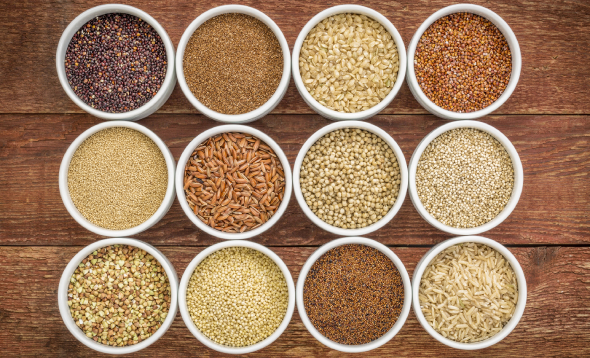That organic living is a conscious health choice
How are ancient grains different from regular grains?
What does ‘ancient grain’ mean?
Let’s start at the beginning. The first use of grains is believed to date back 10,000 years when our ancestors transitioned from hunter-gatherers to farmers. Prompted by rising consumer demand, modern agricultural practices have evolved to include selective breeding, genetic modification, and other biotechnologies. While these practices maximise the yields of farms and even enhance the appearance or nutritional profile, they also modify the grains from their innate form. As such, certain ‘staple’ or widely produced or consumed grains — like corn, wheat and rice —might look and taste similar, but they bear less scientific resemblance to the original. On the other hand, ’ancient grains’ - a term that has only gained currency with the public in the recent two decades - refers to cereals that have remained largely unchanged over the centuries.
What qualify as ‘ancient grains’?
Interestingly, the ‘heirloom’ varieties of the aforementioned non-ancient grains — corn, wheat, and rice — are often included, like blue corn, as well as red and black or ‘forbidden’ rice. While wheat itself is excluded, other close relatives within the wheat family — like kamut, spelt, bulgur, and farro — make the list. Other classically-defined grains derived from cereal grass — such as millet, barley, teff, oats, and sorghum - also fall into this category. As do various ‘pseudo-cereals,’ like quinoa, amaranth, and buckwheat. While not ‘true’ grains, these are non-grass plants that produce seeds that are prepared and consumed as grains.
What are the benefits, if any?
By definition, ancient grains are not genetically modified (non-GMO). Many grow and flourish with ease. They demand less labour on the farmers’ part. So, agriculturally, there’s no need to fix something that’s already working well on its own. They also therefore require less pesticides, herbicides and fertilisers - a plus for shoppers who are both environmentally conscious and concerned about the health consequences of ingesting chemical residues.
Other less ‘naturally successful’ crops are engineered to enable their survival. They’re transformed into what some sources call ‘super-grains,’ able to resist pests and thrive despite climate fluctuation. Eco-friendly consumers respond with concern for the tampering with natural agricultural ecosystems. This hyper-strength grain is also believed to be more difficult to digest, and therefore problematic for sensitive stomachs.
Which ancient grains stand out as top-performers?
It’s important to remember that the same refinement rules apply to all grains— ancient or not. To maximise the benefits of your grains intake, choose 100% whole grains. Refined grains are stripped of their outer bran and husk. This provides a light and fluffy texture and neutral flavour – palatially desirable for breads and pastas. But this processing sacrifices much of their inherent proteins, fibres, and valuable micronutrients — like iron, folate and B-vitamins.
Teff offers unique value in two areas: mineral content and carbohydrate profile. A cup portion of cooked teff offers the same calcium as a half-cup serving of cooked spinach. Teff is also high in resistant starch, a natural fiber that promotes fullness, controls blood sugar and aids digestion.
The iron content of teff is also brag-worthy, but researchers now know that it varies depending on the soil quality on which it is grown. On average, teff offers about 7.35 mg iron per half-cup dry grain. Another gluten-free ancient grain that tops teff - if only by a margin - is amaranth at 7.5mg.
While quinoa receives first prize for protein content amongst the gluten-free ancient grains (6.35 grams protein in 45 grams uncooked), amaranth comes at a very close second (6.10 grams protein). While not gluten-free, spelt and kamut actually rank highest of the ancient grains, at 6.56 and 6.54 grams protein, respectively.
Purple rice, also known as ‘black’ or ‘forbidden’ rice leads the way on antioxidant merits. This member of the rice family derives its characteristic colour from the same beneficial plant pigments as blueberries — anthocyanins. In fact, spoonful for spoonful, purple rice contains higher amounts of the coveted phytochemicals - but with less sugar and more fiber.


























_1672804154.jpg)

_1611290459.jpg)